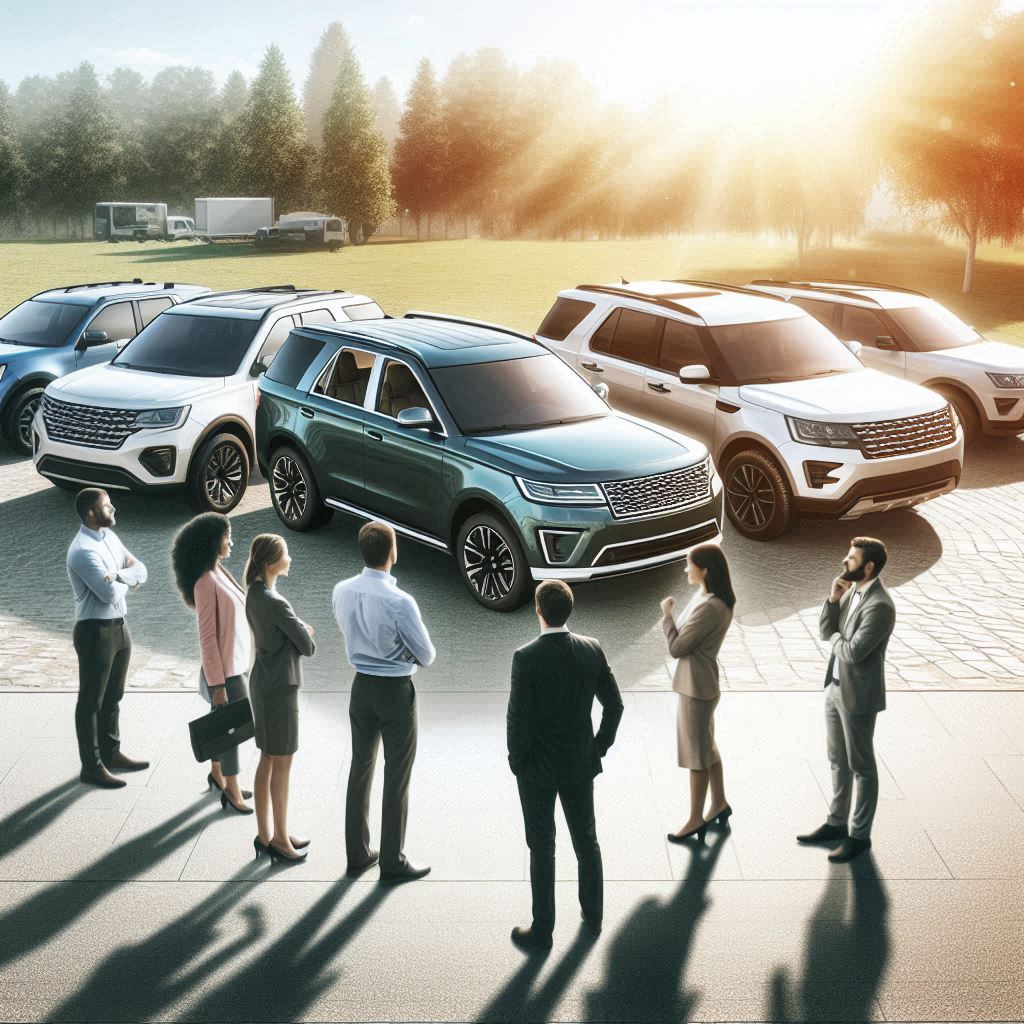SUVs have become increasingly common on roadways, valued for their combination of practicality and spaciousness. Their elevated driving position offers better visibility, which appeals to many drivers.
In urban environments with heavy traffic, SUVs often provide advantages over smaller vehicles. Their size and height make them more noticeable and easier to navigate in congested areas.
Quick navigation
SUV basics: Defining what qualifies as an SUV and how it differs from crossovers and 4×4 vehicles.
Reasons for popularity: Safety features, spacious interiors, and adaptability for family use.
Performance aspects: Off-road ability and comfort combined with electrification trends.
Value considerations: How SUVs offer a balance of security, convenience, and overall appeal.
Defining the Sport Utility Vehicle
An SUV, or Sport Utility Vehicle, combines enhanced passenger comfort with increased cargo space. It typically features a taller body and a raised seating position, providing better visibility and ground clearance. These vehicles often include four doors and a rear cargo area to maximize utility.
SUVs usually offer all-wheel drive, improving traction across various terrains. They come in different sizes—smaller ones focus on fuel efficiency and urban use, while larger versions accommodate more passengers and gear for outdoor activities. Their engines tend to be more powerful than those in compact cars, enabling stronger towing capabilities.
The boxy design commonly found in truck-based SUVs contributes to spacious interiors. Modern SUVs often incorporate advanced technology and luxury features, along with meeting current safety regulations. Fully electric SUV options have also entered the market, adding to the variety available.
Popular SUV features include:
- Higher ride height
- All-wheel or four-wheel drive
- Ample cargo and passenger space
- Stronger engine performance
- Advanced tech and safety systems
Are Crossovers Considered SUVs?
Crossovers share many characteristics with SUVs but differ in construction and driving experience. While SUVs typically have a body-on-frame design built on a truck chassis, crossovers are built using a unibody structure similar to cars. This unibody design results in better ride comfort and improved fuel efficiency compared to traditional SUVs.
Crossovers offer many practical features such as elevated seating positions for enhanced visibility and spacious interiors, making them popular among urban drivers and families. They tend to be lighter and easier to maneuver than larger SUVs, especially in city traffic.
| Feature | Crossover | Traditional SUV |
|---|---|---|
| Construction | Unibody (car-based) | Body-on-frame (truck-based) |
| Fuel Efficiency | Generally higher | Lower |
| Handling | More nimble | Less agile |
| Ground Clearance | Lower | Higher |
| Off-Road Capability | Limited | Robust |
| Weight | Lighter | Heavier |
Many crossovers come with all-wheel drive options, which aid in controlling the vehicle during adverse weather, though their off-road performance usually cannot match that of true SUVs. Manufacturers often market crossovers alongside SUVs, blending features of both vehicle types to meet different driver preferences.
How SUVs Differ from 4×4 Vehicles
SUVs and 4x4s both offer four-wheel traction, but their focus and design vary significantly. Not all SUVs come with four-wheel drive systems, as many opt for all-wheel drive, which operates automatically without driver input.
4×4 vehicles are built primarily for tough, off-road conditions. They include features like low-range gearing and locking differentials to tackle challenging terrain. Their frames are more robust, and they often have higher ground clearance with protective skid plates underneath to prevent damage from rocks and rough surfaces.
In contrast, SUVs balance off-road ability with everyday comfort and convenience. They prioritize passenger space and modern amenities, making them more suitable for urban and highway driving. Many SUVs are engineered to handle a variety of terrains but lack the specialized mechanical parts found in 4x4s.
| Feature | 4×4 Vehicles | SUVs |
|---|---|---|
| Main focus | Off-road performance | Comfort and versatility |
| Drive system | Driver-controlled 4WD | Mostly automatic AWD |
| Ground clearance | Higher | Moderate |
| Protective components | Skid plates included | Rarely included |
| Frame | Sturdy and durable | Lighter construction |
| Passenger comfort | Minimal | High |
For drivers needing serious off-road performance, 4x4s remain the better choice. When regular daily use combined with occasional off-road trips is necessary, SUVs provide a more balanced option with adequate terrain adaptability.
Key Reasons Why SUVs Are So Popular
Enhanced Safety Features
SUVs are often favored for their larger size, which provides a sense of security to drivers and passengers. The higher driving position improves visibility, allowing drivers to spot hazards sooner. Their heavier weight generally offers better protection during crashes compared to smaller vehicles.
Modern SUVs come equipped with advanced safety technologies designed to protect occupants in various collision scenarios. Their elevated design also tends to withstand certain types of impacts more effectively. Families, especially those with children, value these built-in safety benefits.
Versatility and Passenger Comfort
SUVs excel in providing spacious interiors that comfortably seat passengers while offering substantial cargo capacity. Many models include foldable rear seats, making it simple to increase storage space for larger items. The elevated driving position contributes to an enjoyable and commanding view of the road.
Improved suspension systems help absorb bumps, resulting in a smoother ride despite rough terrain. Handling capabilities have improved, with newer SUVs often matching the comfort and control of traditional sedans. This combination supports a wide range of activities, from daily errands to family trips.
Growth of Electric SUV Options
The automotive industry’s shift toward electrification includes an expanding lineup of electric SUVs. These models combine environmental benefits with the practical advantages of SUVs. Electric variants offer quieter operation, instant torque, and reduced emissions while maintaining ample interior space.
Technological improvements in battery life continue to extend driving range. Many electric SUVs qualify for government incentives and meet urban low-emission standards. Public infrastructure is also improving, making electric SUV ownership more convenient and appealing.
Capability for Challenging Terrains
SUVs are designed to perform well beyond paved roads. Features like increased ground clearance and all-wheel or four-wheel drive systems allow them to manage snow, mud, and uneven surfaces. These attributes support outdoor activities such as camping and off-road exploration.
They provide access to remote destinations that smaller vehicles cannot reach. Even compact SUVs tend to outperform conventional cars in these settings. This makes them popular among outdoor enthusiasts and families seeking adventure.
Cost and Long-Term Value
Many SUVs deliver a blend of space, performance, and features at competitive price points. They offer a practical alternative to owning multiple vehicles, appealing especially to families. Popular models typically maintain higher resale values, enhancing overall cost efficiency.
The availability of budget-friendly SUVs has widened ownership opportunities. Owners benefit from a vehicle that adapts to diverse needs over time, making the initial investment worthwhile. The combination of utility and potential long-term financial returns contributes to their popularity.
| Feature | Benefit | User Advantage |
|---|---|---|
| Larger size | Better crash protection | Increased safety |
| Elevated seating | Improved road visibility | Faster hazard detection |
| Foldable seats | Flexible cargo space | Adaptable for varied use |
| Electric powertrains | Reduced emissions and running costs | Eco-friendly, cost-saving |
| All-wheel/four-wheel | Enhanced traction on rough terrain | Better off-road handling |
| Strong resale value | Higher retained worth | More cost-effective long-term |



0 Comment